The Catalyst Killing - [3]
DAY TWO: Three parents, four students – and one slightly problematic witness
I
On the morning of Thursday, 6 August 1970, I woke before seven and realized that I was far too excited to go back to sleep. Following yesterday’s encounter with the woman on the Lijord Line, I felt some of the same obsessive thrill that I had experienced in connection with my first two murder cases. The first investigation had been at as good as a standstill for two days before I met Patricia Louise I. E. Borchmann, following a very timely phone call from her father. I waited no longer than necessary to call her, and felt a surge of relief when, at twenty past seven, I heard her clear, confident voice after only three rings.
Patricia, of course, did not know about the discovery of a dead woman on the train tracks at Smestad late the previous evening. She listened with increasing interest to my account, and whistled with appreciation when I mentioned the deceased’s name. ‘Falko Reinhardt’s fiancée,’ we both said at the same time. Then we sat in comfortable silence for a few thoughtful moments.
I broke the silence by adding: ‘Which can hardly be a coincidence.’
Patricia sniffed so loudly down the telephone that I could just imagine the look of disdain on her face.
‘I can most certainly promise you that it is not. You have of course already checked the date on which Falko Reinhardt disappeared?’
I had to come clean and admit that I unfortunately had not, but tried to excuse myself by saying that surely the date was of no importance here.
Patricia’s voice held a note of triumph when she replied: ‘Perhaps not. But the fact is that Falko Reinhardt, dead or alive, disappeared into the storm in the Valdres mountains on the night of 5 August 1968. And where I come from, that would certainly not be called a coincidence.’
I felt an icy shiver down my spine as my pulse started to race. And I heard myself agree that suddenly the date was of the utmost importance, and that it would not be called a coincidence in my workplace either.
There was nothing to stop Patricia’s morning inspiration and she fired away: ‘Change is the spice of life, even in murder cases. In the 1960s, we dealt with locked-room mysteries and old men. And now at the start of a new decade, you call me about a young woman and an open-space mystery. I must warn you straight away that this could be more difficult terrain. There were only six flats and a total of seven suspects in 25 Krebs Street. And only eleven people sat down to dine at Magdalon Schelderup’s mansion in Gulleråsen. Whereas, in theory, practically anyone could have been at Smestad station last night. Hopefully there will, in practice, be a more limited number of suspects, and I can already give you the names of some of them, having read about Falko Reinhardt’s disappearance at the time. But it is important that we find out as much as possible about what happened in the last hours of Marie Morgenstierne’s life, and who might have been in the area at the time. Find out what she was doing at Smestad yesterday evening and who she met there, and do not delay in requesting any witnesses who might have seen her walking to the station to come forward. Come here for supper at six o’clock this evening and bring with you anything of interest in connection with Marie Morgenstierne’s death and Falko Reinhardt’s disappearance. Will that be possible?’
It sounded more like an order than a question. I replied immediately that it would.
‘Did Marie Morgenstierne throw herself on the tracks, did she fall, or was she pushed?’ I asked.
I should not have done that. Patricia let out a deep sigh, and answered rather pointedly: ‘No. She was shot.’
Thus I could confirm with alarmed relief that Patricia was clearly as on the ball as she had been the year before. She waited until I asked for more details, and then replied without hesitation, ‘I would be very surprised if Marie Morgenstierne was not shot only seconds after the train you were on pulled away from the station. And I think it is highly unlikely that she was shot with a hunting rifle of this year’s model. But hopefully you will know more about that when we meet this evening.’
I replied that I had every hope that I would. Then I put the phone down and left the flat straight away. My mind was already slightly scrambled, but I did have the clarity to realize that I would not be spending much time at home over the next few days.
II
At the office I was informed that a routine examination of the scene of the crime and door-to-door enquiries around Smestad had come up with nothing. So I called the national radio station and asked them to make an announcement calling for possible witnesses in Smestad area the evening before. I quickly established that the newspapers had not yet picked up on the death. The headlines were dominated by the new mid-distance running star Arne Kvalheim’s victory in a race at the Bislett Games, and the one hundred or so demonstrators who had set up camp in order to prevent the planned development of a power plant in Mardøla in Møre and Romsdal municipality.
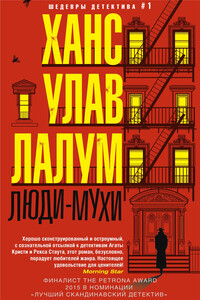
Убит бывший лидер норвежского Сопротивления и бывший член кабинета министров Харальд Олесен. Его тело обнаружено в запертой квартире, следов взлома нет, орудие убийства отсутствует. На звук выстрела к двери Олесена сбежались все соседи, но никого не увидели. Инспектор уголовного розыска Колбьёрн Кристиансен считает, что убийство, скорее всего, совершил кто-то из них. Более того, он полагает, что их показания лживы.
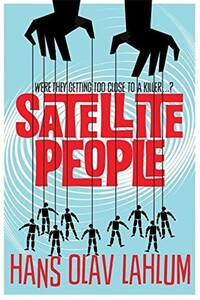
A gripping, evocative, and ingenious mystery which pays homage to Agatha Christie, Satellite People is the second Norwegian mystery in Hans Olav Lahlum's series. Oslo, 1969: When a wealthy man collapses and dies during a dinner party, Norwegian Police Inspector Kolbjorn Kristiansen, known as K2, is left shaken. For the victim, Magdalon Schelderup, a multimillionaire businessman and former resistance fighter, had contacted him only the day before, fearing for his life. It soon becomes clear that every one of Schelderup's 10 dinner guests is a suspect in the case.
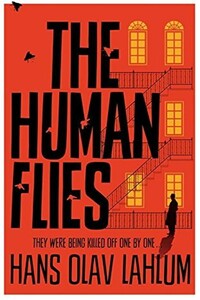
Oslo, 1968: ambitious young detective Inspector Kolbjorn Kristiansen is called to an apartment block, where a man has been found murdered. The victim, Harald Olesen, was a legendary hero of the Resistance during the Nazi occupation, and at first it is difficult to imagine who could have wanted him dead. But as Detective Inspector Kolbjorn Kristiansen (known as K2) begins to investigate, it seems clear that the murderer could only be one of Olesen's fellow tenants in the building. Soon, with the help of Patricia – a brilliant young woman confined to a wheelchair following a terrible accident – K2 will begin to untangle the web of lies surrounding Olesen's neighbors; each of whom, it seems, had their own reasons for wanting Olesen dead.
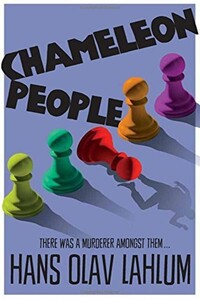
From the international bestselling author, Hans Olav Lahlum, comes Chameleon People, the fourth murder mystery in the K2 and Patricia series.1972. On a cold March morning the weekend peace is broken when a frantic young cyclist rings on Inspector Kolbjorn 'K2' Kristiansen's doorbell, desperate to speak to the detective.Compelled to help, K2 lets the boy inside, only to discover that he is being pursued by K2's colleagues in the Oslo police. A bloody knife is quickly found in the young man's pocket: a knife that matches the stab wounds of a politician murdered just a few streets away.The evidence seems clear-cut, and the arrest couldn't be easier.
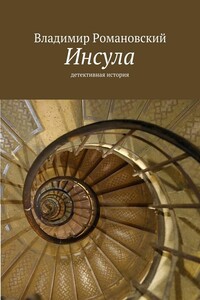
Детективная история, произошедшая в Санкт-Петербурге. Обычные люди в необычных обстоятельствах. Любовь, ненависть, жадность, драки и власть.
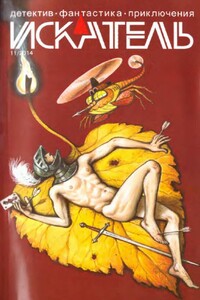
«ИСКАТЕЛЬ» — советский и российский литературный альманах. Издаётся с 1961 года. Публикует фантастические, приключенческие, детективные, военно-патриотические произведения, научно-популярные очерки и статьи. В 1961–1996 годах — литературное приложение к журналу «Вокруг света», с 1996 года — независимое издание.В 1961–1996 годах выходил шесть раз в год, в 1997–2002 годах — ежемесячно; с 2003 года выходит непериодически.Содержание:Анатолий Королев ПОЛИЦЕЙСКИЙ (повесть)Олег Быстров УКРАДИ МОЮ ЖИЗНЬ (окончание) (повесть)Владимир Лебедев ГОСТИ ИЗ НИОТКУДА.
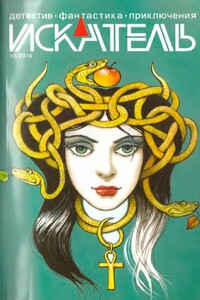
«ИСКАТЕЛЬ» — советский и российский литературный альманах. Издается с 1961 года. Публикует фантастические, приключенческие, детективные, военно-патриотические произведения, научно-популярные очерки и статьи. В 1961–1996 годах — литературное приложение к журналу «Вокруг света», с 1996 года — независимое издание.В 1961–1996 годах выходил шесть раз в год, в 1997–2002 годах — ежемесячно; с 2003 года выходит непериодически.Содержание:Олег Быстров УКРАДИ МОЮ ЖИЗНЬ (повесть);Петр Любестовский КЛЕТКА ДЛЯ НУТРИИ (повесть)
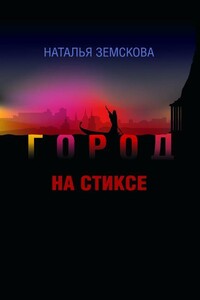
Наталья Земскова — журналист, театральный критик. В 2010 г. в издательстве «Астрель» (Санкт-Петербург) вышел её роман «Детородный возраст», который выдержал несколько переизданий. Остросюжетный роман «Город на Стиксе» — вторая книга писательницы. Молодая героиня, мечтает выйти замуж и уехать из забитого новостройками областного центра. Но вот у неё на глазах оживают тайны и легенды большого губернского города в центре России, судьбы талантливых людей, живущих рядом с нею. Роман «Город на Стиксе» — о выборе художника — провинция или столица? О том, чем рано или поздно приходится расплачиваться современному человеку, не верящему ни в Бога, ни в черта, а только в свой дар — за каждый неверный шаг.
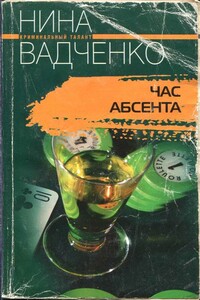
А ведь все так невинно начиналось! Четыре подружки коротали вечерок с бутылочкой «зеленого дьявола» и вели милую дамскую беседу о том… как бы им «грамотно» отправить на тот свет ненавистного шефа. Почему бы не помечтать о приятном в теплой дружеской компании? Все бы ничего, да только шефа вскоре действительно нашли мертвым, к тому же кто-то снял на видео посиделки четырех любительниц абсента. Впрочем, они и сами друг друга теперь подозревают. И распутать этот клубок противоречий по силам только их старой знакомой, неугомонной журналистке Инне Пономаренко…
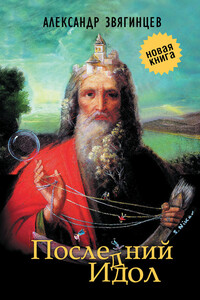
В сборник «Последний идол» вошли произведения Александра Звягинцева разных лет и разных жанров. Они объединены общей темой исторической памяти и личной ответственности человека в схватке со злом, которое порой предстает в самых неожиданных обличиях. Публикуются рассказы из циклов о делах следователей Багринцева и Северина, прокуроров Ольгина и Шип — уже известных читателям по сборнику Звягинцева «Кто-то из вас должен умереть!» (2012). Впервые увидит свет пьеса «Последний идол», а также цикл очерков писателя о событиях вокруг значительных фигур общественной и политической жизни России XIX–XX веков — от Петра Столыпина до Солженицына, от Александра Керенского до Льва Шейнина.